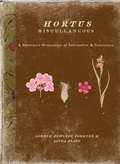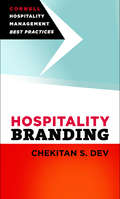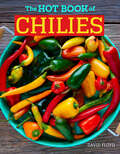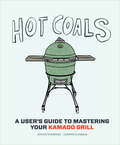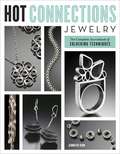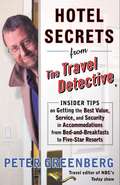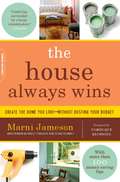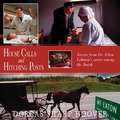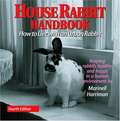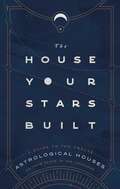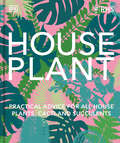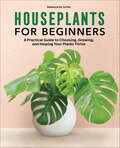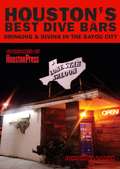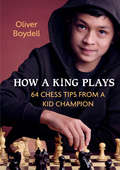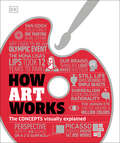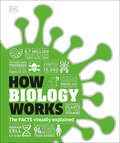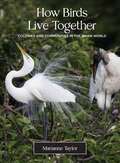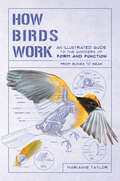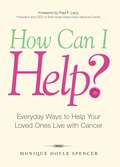- Table View
- List View
Hortus Miscellaneous: A Gardener's Hodgepodge of Information and Instruction
by Lorene Forkner Linda PlatoFrom the kinds of trees standing at Great Dixter to the 20 deadliest flowers to the best small garden animals according to the Indiana Department of Agriculture--gardening is a pursuit with no end of information to sift through. Where does botany start but with the naming and grouping of all flora? List making is in the gardener's blood, and this volume of random facts, data, and wisdom, will excite the Latin-spouting garden geek as much as the arrival of the new Heronswood catalog. Some of the entries will be wholly practical, like the 15 ornamental plants that deer will not eat, and others will be decidedly impractical, such as the flower that adorns the grave of famed English gardener Gertrude Jekyll (bergenia).
Hospital Station (Sector General #1)
by James WhiteSector general is the home of many strange creatures, including humans! it is a vast sectionalized hospital, set up in space to care for all kinds of extra-terrestrials. Each section has a different atmosphere and habitat to cater for the many different species.. all the problems of the staff and patients are in this book.. how to design a spacesuit for a surgeon with eight legs?
Hospitality Branding
by Chekitan S. DevIn recent years the brand has moved squarely into the spotlight as the key to success in the hospitality industry. Business strategy once began with marketing and incorporated branding as one of its elements; today the brand drives marketing within the larger hospitality enterprise. Not only has it become the chief means of attracting customers, it has, more broadly, become the chief organizing principle for most hospitality organizations. The never-ending quest for market share follows trend after trend, from offering ever more elaborate and sophisticated amenities to the use of social media as a marketing tool-all driven by the preeminence of the brand. Chekitan S. Dev's award-winning research has appeared in leading journals including Cornell Hospitality Quarterly, Journal of Marketing, and Harvard Business Review. He is the recipient of several major hospitality research and teaching awards. A former corporate executive with Oberoi Hotels & Resorts, he has served corporate, government, education, advisory, and private equity clients in more than forty countries as consultant, seminar leader, keynote speaker and expert witness. Hospitality Branding brings together the most important insights from the author's many years of research and experience, all in a single volume. Skillfully blending the knowledge of recent history, the wisdom of cutting-edge research, and promise of future trends, this book offers hospitality organizations the advice they need to survive and thrive in today's competitive global business environment.
The Hot Book of Chilies
by David Floyd&“This book serves as a companion that will guide you by the hand into the world of the humble chili pepper&” (The Chili King).The Hot Book of Chilies is a sizzling celebration of one of the world's best-loved plants: capsicum! Featuring a gallery of ninety seven popular varieties, from mild jalapeño and pasilla peppers to hazardous habanero and ghost peppers, this book is perfect for both timid triers and fiery fanatics alike. Learn loads of useful information about each chili, including their degree of hotness on the Scoville scale, health benefits, medicinal properties, history, and biology, as well as how to grow, preserve, and cook them. Dozens of eye-watering recipes are included for entrees, appetizers, salsas, soups, curry powders, hot sauces, jams, and even desserts! The Hot Book of Chilies contains everything you need to know about this small but mighty crop, and all the ways to enjoy it!What&’s inside:A gallery of ninety seven varieties of chili peppersDetails on their degree of hotness, health benefits, biology, and historyFifty one recipes for appetizers, dinner entrees, snacks, sauces, and dessertsTips for relieving chili burn, growing and preserving chili peppers, and much more
Hot Coals: A User's Guide to Mastering Your Kamado Grill
by Jeroen Hazebroek Leonard ElenbaasTwo of the world’s foremost kamado grilling experts show you how to get the most out of this amazing, adaptable cooker—includes thirty recipes!In Hot Coals, chefs Jeroen Hazebroek and Leonard Elenbaas show you why everyone's obsessed with the kamado grill. They lay out thirteen techniques that showcase the grill's range: You can bake a savory quiche, grill a flank steak, and sear Moroccan-style lamb—all in the same device. Hot Coals is packed with essential kamado techniques and information, including thirty recipes, the science behind the cooker, and the key to infusing specific flavors into your dishes. With this indispensable grilling guide, you'll be a kamado master in no time.
Hot Connections Jewelry: The Complete Sourcebook of Soldering Techniques
by Jennifer ChinThe art of soldering--permanently joining metal components with a torch and solder--can open up a new world of creative possibilities for jewelry makers. In Hot Connections Jewelry, award-winning jewelry designer Jennifer Chin guides you through every step, from choosing a torch to basic techniques like sawing, filing, and riveting, as well as more advanced techniques like creating surface textures, setting stones, and using inlay. With 23 in-depth lessons and 15 stunning projects, as well as inspiring examples from contributing artists, Hot Connections Jewelry is your essential guide to unleashing your creativity and confidence in jewelry making. From the Trade Paperback edition.
Hotel Secrets from the Travel Detective: Insider Tips on Getting the Best Value, Service, and Security in Accomodations from Bed-and-Breakfasts to Five-Star Resorts
by Peter GreenbergIndispensable information for away-from-home lodging, from the author of the New York Times bestseller The Travel DetectiveIn Hotel Secrets from the Travel Detective, America’s best-known and most trusted travel authority reveals the insider knowledge that can make every hotel stay as comfortable as (and sometimes even more cost-efficient than) home. With his incomparable access and nose for news, Peter Greenberg shares the secrets that people who know hotels—managers, maids, reservation clerks, bellhops, chefs, and maintenance guys—don’t want you to know about value, service, safety, security, and cleanliness. Tips include:• How to tell if your room is really clean • What never to order from room service • The real way to prevent hotel crime• How to beat excessive hotel phone charges• The exact rooms where headline-making events took place Drawn from the author’s experiences as both an investigative reporter and a constant traveler, Hotel Secrets from the Travel Detective is an essential guide to everything from luxury resorts to motels, from airport hotels and bed-and-breakfasts to outrageous (and often secret) alternatives to hotels.
The House Always Wins: Create the Home You Love—Without Busting Your Budget
by Marni JamesonVia her weekly syndicated column, "At Home with Marni Jameson," Jameson is one of the funniest, most eagerly read purveyors of home-improvement advice. <P><P> The House Always Wins, her compulsively readable, zanily humorous, yet completely practical guide hailed by critics, now has even more moneysaving advice on creating, living in, and even selling a beautiful, livable home.
House Calls and Hitching Posts: Stories From Dr. Elton Lehman's Career Among The Amish
by Dorcas HooverMedical technology meets rural values of simplicity, home health remedies, and unwavering faith in divine providence when a country-boy-turned-country-doctor returns to his roots. House Calls and Hitching Posts is a sometimes humorous and often intimate account of Dr. Elton Lehman's 36 years practicing medicine among the Amish of Wayne, Holmes, and surrounding counties in Ohio, for which he was named Country Doctor of the Year. Now you can witness house calls and private moments between doctors and patients. Joe brings his dismembered fingers to the office in a coffee can filled with kerosene. Katie delivers a boy for the doctor's first home-birth. And three-year-old Davy rallies to overcome a life-threatening illness at birth only to be crushed under a tractor wheel. Hoover captures in sometimes local vernacular the joys and dilemmas of a family practitioner among a rural and predominantly-Amish community. Includes two galleries of photographs from Dr. Lehman's distinguished career.
House Rabbit Handbook: How to Live with an Urban Rabbit
by Marinell HarrimanThe House Rabbit Handbook coined the term house rabbit and continues at the forefront of rabbit care and appreciation. Packed with the collective wisdom of bunny-lovers and charming, candid photos of their pets, this fourth edition keeps pace with a more knowledgeable and demanding readership. This revision includes updated health-care and dietary information, accompanied by diagrams and photo illustrations, and chapters on understanding rabbit language, choosing a rabbit, and safety issues. A new section includes revised recommendations for rabbit space and how to creatively integrate it with human space. Fresh housing options described here include condos and Xpens. Exercise and ways to encourage it is the subject of another new section, covering how the shape of an exercise area can determine whether it's used, along with equipment and stimulating activities for rabbits. Also here are improved techniques for litter box training, bunny proofing, lifting and handling, grooming and bonding; behavior insights from expert caregivers; dealing with elderly, special-needs, and disabled bunnies; and much more.
The House Your Stars Built: A Guide to the Twelve Astrological Houses and Your Place in the Universe
by Rachel Stuart-HaasLevel up your stargazing skills and learn to interpret your own astrological birth chart with this fun, accessible guide to the twelve houses of the zodiac, perfect for armchair astrologers everywhere!So you know your sun sign, rising sign, and moon sign…but what about the rest of your birth chart? It&’s no longer enough to just to know you&’re a Scorpio or read your horoscope. After all, delving deeper into our natal charts and the nuances of the astrological world can offer us a rich, exciting tapestry of our innate preferences, relationships, choices, and destiny For those in the know, the zodiac calendar is divided into twelve houses, each ruled by a different sign (Aquarius, Scorpio, Gemini, etc.) and said to govern a particular set of traits. When we&’re born, where the planets were stationed relative to those houses inform our natural tendencies. Understanding each house can bring detailed insights about every aspect of your life: peoples&’ first impression of you, to your values, communication, pleasure, home and family, partnership, and beyond. In order to fully understand our place in the universe we need to understand the meaning of each planet, the house it&’s stationed in, and what that interaction means. Going house by house, practicing astrologer and artist Rachel Stuart-Haas teaches you how to create and interpret your unique birth chart, making this often dense and complicated layer of astrology accessible for newcomers and astrology enthusiasts alike. With her expert guidance, you will gain insight into questions like: -Where will I feel at home? -What career paths fulfill me? -What do I need in a partner? -What makes me feel abundant? Perfect for anyone who has ever been curious about their place in the world, The House Your Stars Built is a must-have and beautiful resource for astrology lovers.
Household Tips: Over 300 Useful and Valuable Home Hints
by A L FowlerFirst published in 1916, A L Fowler's book of household tips is an indispensable guide to all those 'Kim and Aggy' moments - from cleaning a dirty clothesline and removing paint from window panes, to obliterating a whole host of stains, from rust to indelible ink, to blood and mildew. This delightful little volume also reveals the best way to rid yourself of those annoying household pests, including ants, beetles and flies; how to remove odours from your hands; and advises on the use of natural products to clean floors, windows and cooking utensils. Fowler also shows the twentieth-century housewife how to perform miracles in the kitchen, with tips on making pastry extra flaky, the quickest way to peel carrots and how to remove burns from a cake.
Houseplant: Practical Advice for All Houseplants, Cacti, and Succulents
by DKDiscover over 330 houseplant varieties and make the most of them with care advice, design inspiration, and step-by-step projects.Turn your living space into an indoor oasis with the RHS's definitive guide to more than 330 houseplant varieties.Take your house plant collection to the next level with Houseplant. Discover the best varieties to suit your home from more than 330 profiles on every kind of houseplant you can imagine, from succulents and cacti to orchids, bromeliads, and even carnivorous plants.Complete with essential care advice to keep your plants alive and thriving, propagation tips to help you grow your collection, and 24 step-by-step projects designed to make the most of your greenery, Houseplant has everything you need to create, cultivate, and care for your indoor garden.
Houseplants for Beginners: A Practical Guide to Choosing, Growing, and Helping Your Plants Thrive
by Rebecca De La PazBecome the best houseplant parent you can be with beginner-friendly tips and toolsHouseplants are a great way to decorate, ease stress, and stay connected with nature when you're indoors. If you're looking to grow your collection and need some advice, Houseplants for Beginners has all the information you'll need to successfully care for your plants and help them thrive.Learn how to shop for and repot houseplants, choose the best place in your home for them, and address a variety of challenges like pests and diseases. With 120 common houseplant profiles grouped from low maintenance to high maintenance, you can familiarize yourself with individual plant needs and choose the best ones for your lifestyle.The perks of houseplants—Explore a brief history of houseplants and the benefits of bringing nature inside, including relieving stress and inviting more creativity and happiness into your life.Plant wisdom—Find key insights to set you up for success as you begin your houseplant adventure, from propagation techniques to safety suggestions.Troubleshooting tips—Get straightforward advice for solving seemingly difficult houseplant problems.Fill your home with flourishing houseplants with help from this essential guide for beginners.
Housing Design Quality: Through Policy, Guidance and Review
by Matthew CarmonaThis book directly addresses the major planning debate of our time - the delivery and quality of new housing development. As pressure for new housing development in England increases, a widespread desire to improve the design of the resulting residential environments becomes evermore apparent with increasing condemnation of the standard products of the volume housebuilders.In recent years central government has come to accept the need to deliver higher quality living environments, and the important role of the planning system in helping to raise design standards. Housing Design Quality focuses on this role and in particular on how the various policy instruments available to public authorities can be used in a positive manner to deliver higher quality residential developments.
Houston's Best Dive Bars
by John Nova LomaxHouston, that sun-drenched, humidity-steamed subtropical megapolis, might not be the first place you think of when you rattle off great American drinking towns. When most outsiders think of the city at all, images of cowboys, astronauts and oilmen come to mind. And truth be told, many natives wrestle with the concept of a dive bar, thinking that any gin mill that lacks a velvet rope, bottle service and a valet parking service is a dive.In Houston's Best Dive Bars, award-winning journalist (and third-generation Houstonian) John Nova Lomax sets the record straight on what exactly a dive is (and isn't) in the Bayou City. From Korean houses of ill repute on Telephone Road to bluesy Third Ward juke joints, from Galveston County bayside gang haunts to Spring Branch redneck redoubts, from famous old Inner Loop standbys like the Lone Star Saloon and the West Alabama Ice House to obscure gems like the D&W Inn and the Sundown Saloon, Lomax drank, and with this book as evidence, lived to tell the dive-y tales. The result is the first of its kind and the only guidebook to drinking and diving in Houston you will ever need.
How a King Plays: 64 Chess Tips from a Kid Champion
by Oliver BoydellFor fans of The Queen's Gambit comes a brand-new book from 11-year-old chess champion Oliver Boydell. How a King Plays features 64 of Boydell's tips, strategies, and ideas to help chess enthusiasts of all ages sharpen their game skills.Whether you're new to chess or a Grandmaster, there's something for everyone in chess phenom Oliver Boydell's new book of 64 chess tips, How a King Plays. At only 11-years-old, Boydell has already been both a National Chess Champion and a New York City Chess Champion who's competed at numerous major scholastic chess events since he started playing at the age of 5. Now, Boydell is lending his talents to the page as he shares some of his best tips that helped him become a star. Written in his signature concise and witty voice, Boydell offers players of all levels—from beginners to advanced—a different, creative tip on every page. An introduction from the author, inspirational quotes from chess greats, and a glossary of terms help round out this comprehensive and informative, fun guide. Jam-packed with wisdom and imaginative gameplay, this compact and portable reference book can easily be taken on the go to a tournament, to the park, or anywhere you're traveling. How a King Plays is the ideal companion for anyone whose passion for chess can't be contained.
How Art Works (DK How Stuff Works)
by DKWhat goes into creating art? How can we learn to "read" paintings? What are the key elements of composition? If you&’ve ever found yourself seeking the answers to the above questions and more, then this may be the book for you! An art book like no other, How Art Works uses practical graphics to demonstrate the techniques, styles, materials, and concepts that lie behind great art. It shows you how to interpret paintings, drawings, and sculptures, and reveals how art is made, laying out the key techniques and materials in visual detail. It also explains the nuts and bolts of the technical aspects behind art, such as perspective and composition, and shows how to identify major artistic styles and movements.This awe-inspiring art history book features:- Oil and watercolor painting, drawing, ceramics, sculpture, and more- Explains the technical aspects of visual arts including perspective, light, color, form, and texture- A selection of major art movements such as Impressionism, Cubism, Surrealism and more- Shows how information, messages, and emotion can be conveyed through art- Highlights key inventions and developmentsProviding all you need to know to build on your artistic understanding and appreciation, this is the perfect book for art lovers of all kinds, whether you&’re an art student, or you&’re simply a lover of visual art and are looking to discover more about art but aren&’t sure where to begin. At DK, we believe in the power of discovery. So why stop there?How Art Works is part of DK&’s widely successful How Stuff Works series. Discover the inner workings of the mind with How the Brain Works, succeed in all things science with How Science Works and discover the cosmos like you&’ve never known before with How Space Works. Whatever topic sparks your interests, there&’s a plethora of knowledge to discover!
How Big Is Your Shopping Footprint? (Environmental Footprints)
by Paul MasonWhat sort of footprint are you leaving on the environment? Do you have a heavy footprint or a light footprint? Everything we do and everything we use has an impact on the environment. Heavy footprints harm the environment and use lots of natural resources. Light footprints harm the environment as little as possible and use fewer natural resources. Read the ENVIRONMENTAL FOOTPRINTS series to decide what type of footsteps you want to take in the future! In How Big Is Your Shopping Footprint? read about what makes up a shopping footprint and the effect this has on the environment. Discover ways to reduce your shopping footprint and live sustainably. Special Features Rethink! feature offers way to lighten your footprints Case studies give real-life examples of heavy-footprint and light-footprint actions. Rethink! Disposable plastic shopping bags create waste. Bringing reusable canvas bags to hold your purchases at the mall or grocery store lowers your shopping footprint.
How Biology Works: The Facts Visually Explained (DK How Stuff Works)
by DKDiscover everything you need to know about biology, with the simplest most visual guide to the science of life.How do vaccines work? What is special about stem cells? How did we evolve from bacteria? The science of life can be dauntingly complex, and it can be hard to separate &“good&” science from &“bad&”, fundamental truths from the much-hyped breakthroughs reported in the media. With clear, easy-to-understand graphics and packed with fascinating facts, How Biology Works demystifies both the core biology that may have eluded us at school, and the cutting-edge life science that makes the news, answering the questions that spark our curiosity.With power to every page, this striking science book:- Is illustrated entirely by specially commissioned, boldly-colored, distinctive, flat, vector graphics that explain each topic clearly and engagingly.- Uses clear, distinctive, eye-catching graphics to make even complex biology easy to understand.- Offers a practical, no-nonsense approach to each subject.Building from life&’s fundamental ingredients, such as carbon and water, the book explains chemical processes in living cells, controlled by the ultimate biochemical, DNA. It shows how DNA is made of units called genes, which are shuffled in each generation of offspring, leading to variation and evolution. It covers topics from school biology, such as how plants work and how animals, including humans, work, and goes on to ecology and biotechnology. Beyond school science, however, it covers the background to the latest medical technology and biotechnology: how gene therapy works, what stem-cell research is achieving, and how our immune systems, boosted by vaccines, are in an arms race with ever-mutating viruses and other pathogens.At DK, we believe in the power of discovery.So why stop there?How Biology Works is part of DK's widely successful How Stuff Works series. Discover the inner workings of the mind with How the Brain Works, succeed in all things science with How Science Works and discover the cosmos like you've never known before with How Space Works. Whatever topic sparks your interests, there's a plethora of knowledge to discover!
How Birds Live Together: Colonies and Communities in the Avian World
by Marianne TaylorA beautifully illustrated exploration of the ways birds cohabitFeaturing dramatic and delightful wild bird colonies and communities, How Birds Live Together offers a broad overview of social living in the avian world. From long-established seabird colonies that use the same cliffs for generations to the fast-shifting dynamics of flock formation, leading wildlife writer Marianne Taylor explores the different ways birds choose to dwell together.Through fascinating text, color photos, maps, and other graphics, Taylor examines the advantages of avian sociality and social breeding. Chapters provide detailed information on diverse types of bird colonies, including those species that construct single-family nests close together in trees; those that share large, communal nests housing multiple families; those that nest in tunnels dug into the earth; those that form exposed colonies on open ground and defend them collectively, relying on ferocious aggression; those that live communally on human-made structures in towns and cities; and more. Taylor discusses the challenges, benefits, hazards, and social dynamics of each style of living, and features a wealth of species as examples.Showcasing colonies from the edge of Scotland and the tropical delta of the Everglades to the Namib Desert in Africa, How Birds Live Together gives bird enthusiasts a vivid understanding of avian social communities.
How Birds Work: An Illustrated Guide To The Wonders Of Form And Function--from Bones To Beak (How Nature Works #0)
by Marianne TaylorEngineered by evolution to thrive in the wild A tiny textbook to learn on your own How Birds Work goes beyond the typical field guide to show us not only what birds look like but why. Why do many owls have asymmetrical ear openings? (Hint: It helps them pinpoint prey; see page 40.) And why does the Grey Heron rest on one leg at a time? (Hint: Not because it’s tired; see page 66!) Birds boast a spectacular array of adaptations suited to their incredibly diverse diets and habitats. In this in-depth handbook, discover the ways they’re even more astounding than you know—inside and out. Detailed analysis and illustrations illuminate: Skeleton Muscles Circulation Digestion Respiration Reproduction Feathers Colors and Patterns And much, much more!
How Can I Help?: Everyday Ways to Help Your Loved Ones Live with Cancer
by Monique Doyle SpencerWhen a loved one is diagnosed with cancer, it is often difficult to know what to do. Those who want to help can sometimes make matters worse. Written in a frank conversational manner, this book offers readers specific advice on what to do for a friend or loved one in need, such as offer to do the weekly grocery shopping, pick up the kids from school or bring them to practice, choose to be a chemobuddy, and keep up with bills and other important deadlines.This stressful and uncertain time is difficult for the patient's family and friends. How Can I Help? provides the support and guidance everyone needs to make this time easier.
How Charts Lie: Getting Smarter About Visual Information
by Alberto CairoA leading data visualization expert explores the negative—and positive—influences that charts have on our perception of truth. We’ve all heard that a picture is worth a thousand words, but what if we don’t understand what we’re looking at? Social media has made charts, infographics, and diagrams ubiquitous—and easier to share than ever. We associate charts with science and reason; the flashy visuals are both appealing and persuasive. Pie charts, maps, bar and line graphs, and scatter plots (to name a few) can better inform us, revealing patterns and trends hidden behind the numbers we encounter in our lives. In short, good charts make us smarter—if we know how to read them. However, they can also lead us astray. Charts lie in a variety of ways—displaying incomplete or inaccurate data, suggesting misleading patterns, and concealing uncertainty—or are frequently misunderstood, such as the confusing cone of uncertainty maps shown on TV every hurricane season. To make matters worse, many of us are ill-equipped to interpret the visuals that politicians, journalists, advertisers, and even our employers present each day, enabling bad actors to easily manipulate them to promote their own agendas. In How Charts Lie, data visualization expert Alberto Cairo teaches us to not only spot the lies in deceptive visuals, but also to take advantage of good ones to understand complex stories. Public conversations are increasingly propelled by numbers, and to make sense of them we must be able to decode and use visual information. By examining contemporary examples ranging from election-result infographics to global GDP maps and box-office record charts, How Charts Lie demystifies an essential new literacy, one that will make us better equipped to navigate our data-driven world.
How Did It Begin: The Origins of Our Curious Customs and Superstitions (Revised Ed.)
by R. L. BraschHow Did It Begin? is an entertaining look at why we do and say the things we do. Why do we say that cranky people must have got out of bed on the wrong side? Why is it bad luck to whistle at sea? What are crocodile tears? And what is a grass widow? Where did the expression to eat one's hat come from? Why do men and women button their clothes on different sides? Why are horseshoes lucky? And why do we all eventually kick the bucket? With his trademark curiosity and delight, Dr. Rudi Brasch delves into the forgotten meanings and fascinating origins of our customs, traditions, superstitions, and phrases. Divided into themes like courtship and marriage, table manners and drinking customs, right through to the extraordinary rituals connected with the armed services, medicine, and the law, How Did It Begin? is wide-ranging, idiosyncratic, erudite, and engaging.
